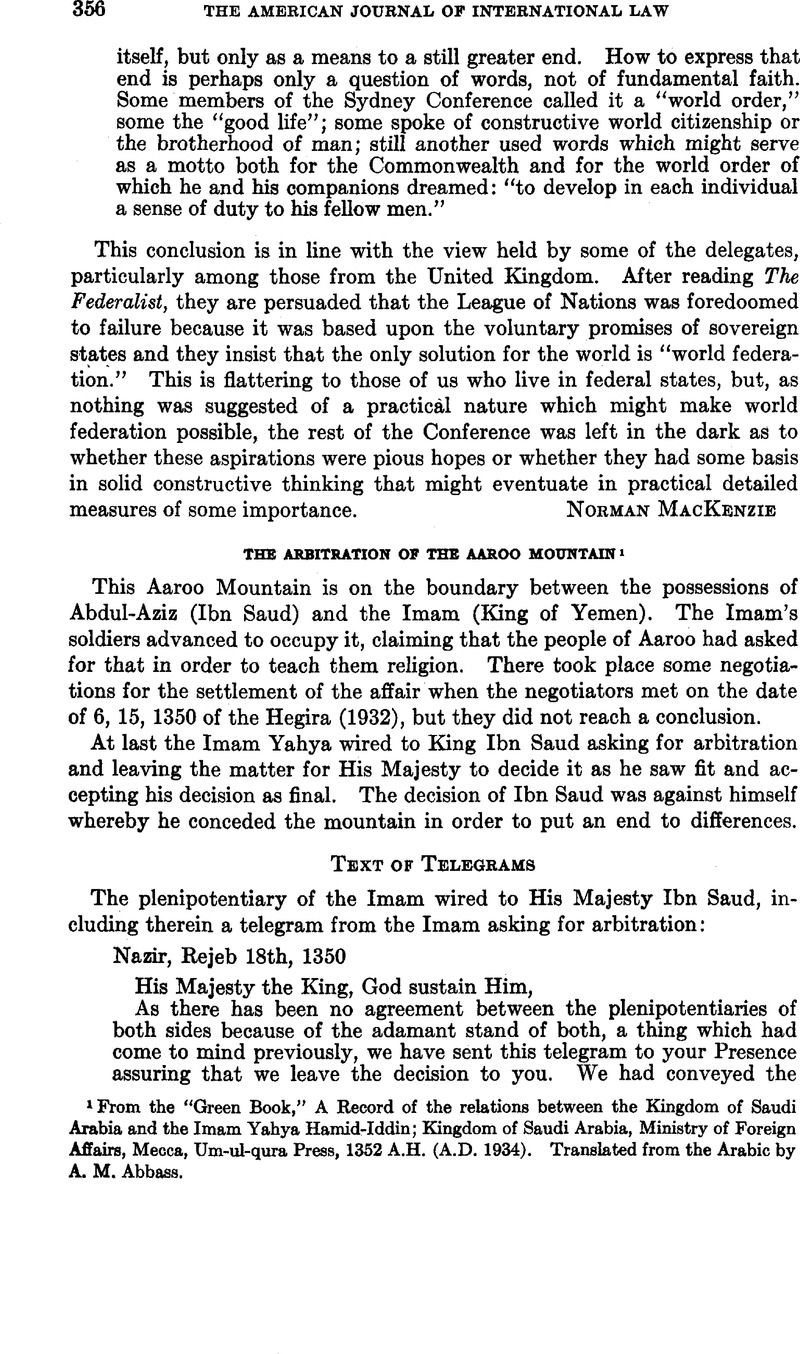No CrossRef data available.
Article contents
The Arbitration of The Aaroo Mountain1
Published online by Cambridge University Press: 12 April 2017
Abstract

- Type
- Current Notes
- Information
- Copyright
- Copyright © The American Society of International Law 1939
Footnotes
From the “Green Book,” A Record of the relations between the Kingdom of Saudi Arabia and the Imam Yahya Hamid-Iddin; Kingdom of Saudi Arabia, Ministry of Foreign Affairs, Mecca, Um-ul-qura Press, 1352 A.H. (A.D. 1934). Translated from the Arabic by A. M. Abbass.
References
1 From the “Green Book,” A Record of the relations between the Kingdom of Saudi Arabia and the Imam Yahya Hamid-Iddin; Kingdom of Saudi Arabia, Ministry of Foreign Affairs, Mecca, Um-ul-qura Press, 1352 A.H. (A.D. 1934). Translated from the Arabic by A. M. Abbass.
2 Third Annual Message, Dec. 7, 1903, Richardson, Messages and Papers of the President, Vol. X, p. 646.
3 Kiesselbach, Wilhelm, Problems of the German-American Claims Commission (Washington, 1930), p. 8 Google Scholar.
4 The background of the dispute and the actual motives of Ibn Saud have been thus explained in a letter from Mr. Majid Khadduri of Bagdad dated Feb. 2, 1939:
“The conflict aroused Muslim public opinion and each of the belligerents tried to shift the responsibility of the war to the other. The Imam sent private letters to a number of leaders in the Muslim world to defend himself. These letters were considered by the government of Saudi Arabia ‘absolutely contrary to actual facts and full of obvious lies.’ (Green Book, Introduction, p. ii.) Consequently the government of Saudi Arabia published the ‘Green Book,’ which is a record of the diplomatic correspondence between the governments of Yeman and Saudi Arabia. The ‘Green Book’ dates the origin of the dispute from 1926, when the Imam extended his protection to the Adrisis (of Tihama). This protection was recognized by Ibn Saud by the treaty of Oct. 21, 1926. But the new boundaries between the two monarchs were not settled. This led to many disagreements and conflicts. One of the points at issue was the dispute on the Jabal Aru (Aru mountain). The Aru dispute, however, was only one among many others which preceded the war. The arbitration is given as an example to show the peaceful attitude of Ibn Saud so that he went so far as to give an opinion against his own interest. The account is true, no doubt; but it is a true story to show not necessarily a wholly true attitude.”
5 See Majid Khadduri, The Law of War and Peace in Islam, MS. dissertation, University of Chicago Library, 1938, pp. 93-97.
6 See Wright, Quincy, “Government of Iraq,” American Political Science Review, November, 1926, Vol. XXI, p. 764 Google Scholar.


